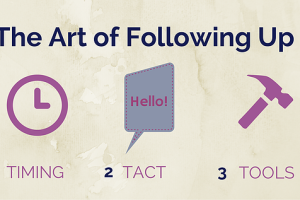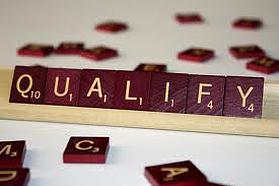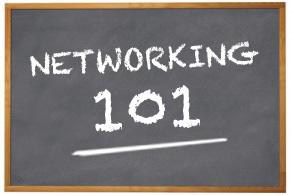We’re frustrated. Our prospect has been giving us the runaround for a few weeks now — which feels strange, since things have gone swimmingly up until this point. He seemed genuinely interested in our product at the conference last month. He eagerly gave us his contact information, made little fuss about scheduling an on-premises visit to tour his facilities a short while later, and even let us take him to lunch to talk about implementation timelines.
But lately things seem to have stalled. We’ve had several lukewarm phone exchanges since that lunch, but nothing committal. We’ve sent over the necessary paperwork to follow up on our last conversation, but we’re getting no indication that he’s ready to take the next step. Everything is still friendly, but we get the distinct impression we’re in a holding pattern — and we can’t keep this up forever.
There are many reasons why a warm lead might suddenly go cold, but it’s especially frustrating when a lead remains “lukewarm,” neither wanting to move forward nor giving us an outright “no” to indicate that it’s time to move on to the next prospect. We don’t want to offend the person by pushing too hard; if they’re serious about moving forward, we can afford to wait. But at the same, we can’t waste time and other resources on someone who may keep us in this holding pattern indefinitely.
So how do we (politely) call a non-committal prospect on their bluff? How do we recognize when it’s appropriate to gently push back so that we can clarify the best use of our time moving forward?
First, assess the real quality of the lead.
Not all friendly, interested leads are truly good leads. It may be that they’re not the ones with final decision-making power — or that the one who does have power doesn’t currently share their enthusiasm. Or perhaps they’re still interested but courting a competitive bid they don’t want to tell us about. Or maybe they’re just good, old-fashioned “people pleasers” who don’t want to hurt our feelings by saying no after we’ve been so kind to them.
Whatever the case, if we’ve been going around in circles for more than a few weeks, it’s time to reassess the quality of the lead. Here are some tasteful qualifying questions we can ask to help determine where we really stand with them at the moment:
- How soon are you looking to act? If they have a definite, but future date in mind, this can help us cool our jets a bit and be strategic about nurturing the lead along. Maybe we’re jumping the gun a bit and just need to politely check in from time to time. But if — as is more likely the case — they say things that suggest they either have no date for making a decision, this may imply either a lack of urgency or a tacit commitment to the status quo.
- Who’s in charge of pulling the trigger when you decide you’re ready to act? If they suggest that it’s anyone besides them, we can follow up by asking for permission to reach out to (or be introduced to) the decision-maker, to help our prospect communicate value upstream. But if they’re vague about the decision-making process or express pessimism towards “the powers that be,” this can be a clear sign that we’re at a communications impasse.
- Are you considering other solutions right now? This can help tease out whether a competitor is courting the same prospect. If so, we can gear our future communications to regain some potentially lost ground. But if the answer is no, this might indicate a lack of interest or urgency to move forward on the customer’s part.
If the answers to these questions aren’t particularly helpful, we can also try giving our prospects a small “assignment,” as a way of gauging their level of interest in moving forward. We might, for instance, send over a pre-implementation checklist, asking our prospect to meet with certain key stakeholders to ascertain their organization’s current fitness for implementation so that we can craft a custom implementation timetable for them. Since this would entail mild to moderate inconvenience for a disinterested prospect, we can be fairly certain that, if they balk at a reasonable request like this, they’re basically saying “no thanks” to our solution.
Second, learn to use the “negative reverse.”
This is a bold step, but a highly effective one for those prospects who seem like “soft maybes” instead of “soft no’s.” Once we’ve ascertained that we have little to lose by pushing back a little, we do exactly that— and risk sounding a bit rude to do so — in order to coax the prospect to commit to either a yes or a no on the next step toward a mutually favorable outcome.
So what does that look like in practice? Well, it’s more art than science, but basically we tastefully frame our response as a question that calls our prospect’s bluff:
- We seem to be missing a lot of connections lately. Is it possible that your interest in our solution has changed? I don’t want to keep bothering you if so.
- I’m sensing that maybe you’re not actually interested in our proposal. Am I totally off-base, or would you prefer I stop trying to schedule an appointment with your team?
- I can see that you’re tremendously busy. Perhaps this isn’t the most urgent problem for you right now. Would you prefer to reach out to me instead?
For traditionally trained salespeople, sentences like those may sound rather unorthodox—because they are! They’re not the sort of thing we would want to use the first time a prospect pushes us off for another day. Maybe not even the second or third time. But after a while, we all begin to recognize the “objections” that signal a quagmire of lukewarm “maybes.” So when we push back against these, we know that one of three things is likely to happen:
1) Our prospect will get angry. We should be prepared for this, because no one likes the implication that they’re being dishonest. If this happens, we can politely apologize, insist that we’re only trying to be considerate of both parties’ time, and attempt to channel the “energy” of the moment in a positive direction — such as by asking the prospect to do something for us that will help us clarify their intentions (see above). In the best case, that energy will lead them to do exactly as we ask (even if only to prove their point). This gives us an actionable next step on our end. In the worst case, we’ll never hear from them again; but at least we’re not wasting any more time on this file.
2) Our prospect will reveal the real obstacle. Perhaps we’ll learn that it isn’t really about schedule, but budget. They can’t afford to move forward at this time, but they’re afraid to lose the price we promised them if they walk away now. Or perhaps we’ll find out that the person we’re talking to is still very interested, but someone higher up has overruled them—and they don’t want to disappoint us. Whatever the issue, this helps us better decide what our next move is to be.
3) Our prospect will say no. This, of course, is what we already suspect, but when we call their bluff, our prospects get a chance to own up to it. They may couch the “no” in other language (“We just can’t afford it,” or “We’ve decided to pursue something else,” for instance), but it’ll be clear and decisive. We might ask one or two follow-up questions just to better understand the nature of the deal-breaker, but we don’t need to try changing their mind at this point. We just need to apply what we’ve learned to our next prospect, thank this one for their time, and move on.
When you think about it, any of those three options still works in our favor. So once we have nothing to lose by pushing back, any response is better than the ones we’ve already been courting for too long.
Let’s keep in mind that, for many people, it’s profoundly unpleasant to have to say “no” to someone who wants you to say “yes.” Such people keep hoping we’ll just “take a hint” and stop calling. But as salespeople, it’s our job to keep calling. That’s why we’re doing both parties a huge favor when we learn when and how to call non-committal prospects on their bluff.









Speak Your Mind